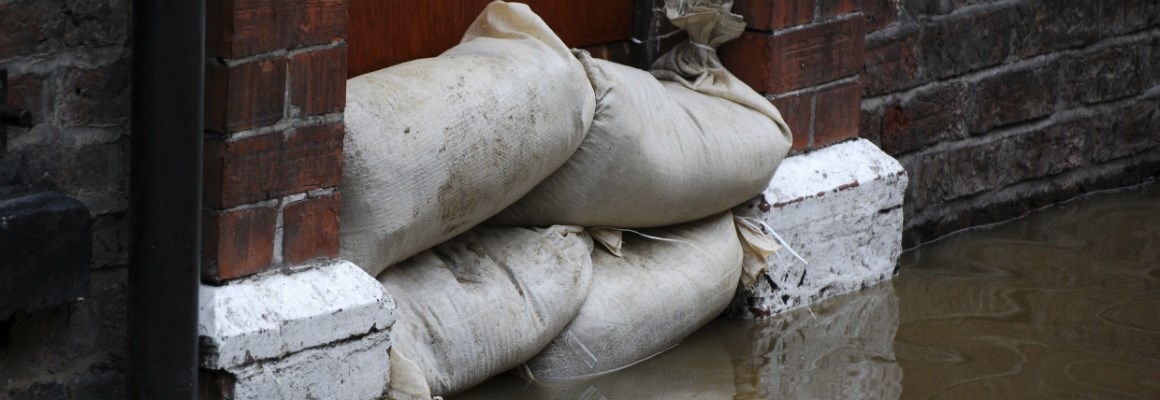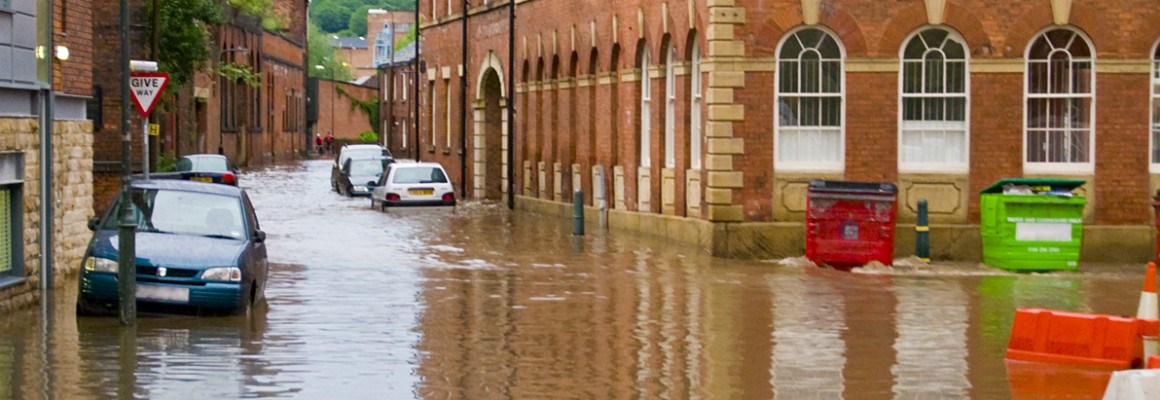How to protect against flooding at home: tips and advice to save your possessions
Whether you’re a homeowner or a renter, flooding can be one of the most devastating things to happen in your lifetime. And unfortunately for those who live on flood plains or in basement flats, it’s likely that your home could flood more than once.
Around 5 million people live in flood risk areas in England and Wales, meaning that one in every six homes is at risk of flooding. So if that refers to you, what can you do to protect your home and possessions from the risk of flood?
Is your home at risk of flooding?
On the Environment Agency website, you can enter your postcode to check if your home is at risk of flooding from nearby rivers, the sea, surface water, or even reservoirs. The site also gives your home a flood risk rating of high, medium, low or very low.
Similar information is available from the Scottish Environment Protection Agency and National Resources Wales for homeowners in Scotland and Wales.
If you live in an area with a high risk of flooding, there's actually a lot you can do to minimise the chances of further disruption and inconvenience. Print this guide to leave in a safe place in your home. It has emergency information and instructions to ensure that you act safely in the event of a flood emergency: Flooding: a guide to protecting your home and staying safe.

How to be ready for a flood
1. Locate your main stopcock
The stopcock is the large tap normally found under or close to your sink - make sure it’s easy to get to, and that it works. Remember: left to loosen, right to tighten.
2. Decorate with tiles or wooden flooring
Although a brand new plush carpet is enticing, if you decorate with tiles or wooden flooring, it’ll be easier to clean than a carpet if your home is flooded. Instead, invest in rugs that can be rolled up and taken upstairs in the event of a flood warning.
3. Install a waterproof lining in the basement or cellar
Installing waterproof lining can prevent water from entering into the property through the ground, and will also prevent damp. If you live in a basement flat, this may have already been done if the flat was recently renovated or converted. If you are not the owner, check with the landlord before signing the tenancy agreement or ensure that other adequate measures are in place.
4. Get advice on what flood prevention methods to use
Each local authority will be able to recommend flood prevention methods to use in your area, taking into account the permanent flood defences and the direction that excess water is funnelled. Visit your council’s website for more details.
5. Document your possessions
Save receipts or photographs of receipts for any valuable items if possible. If you ever need to make an insurance claim, these will make the process much easier. Storing your receipts digitally is also a good idea.
6. Keep digital copies of important documents
Keep a digital copy of your insurance policy documents wherever possible. Hard copies may not be accessible if filed away at home when a flood hits.
7. Have sandbags to hand
Having a stock of sandbags at the ready will help when it comes to preventing damage in an emergency. Talk to your neighbours to consider building a community storage area where they can be kept close by outside of flood season.
8. Keep an emergency flood kit close to your front door
In case of evacuation, keep an emergency grab pack in a safe place. It should contain:
- First Aid Kit
- Emergency information
- Spare house keys
- Waterproof clothing
- Blankets
- Bottled water
- Pen and paper
For insurance purposes you may also want to keep a marker pen handy to mark where the flood water comes up to on your wall.
What to do when a flood is predicted
1. Move possessions out of reach of the flood water
Move valuable possessions upstairs or to higher areas of your home. Whilst this may be possible with things like rugs, chairs, televisions and coffee tables, you may not be able to carry your sofa or dining table upstairs in the event of a flood. Remember to ask help from friends and neighbours to do it safely. Similarly, take down curtains.
2. Use sandbags and floodgates to block potential water entry points
Sandbags work by acting as a barrier, diverting moving water around buildings rather than through them. Sandbags should be placed tightly against one another to prevent water from passing through. Place them around your flood gate at the front door, or even around the garden gates.
3. Plug sinks, toilets and the bath with weights
During flooding, drains can stop flowing which means sewage could make its way back up into your sinks, toilets and bath. Because of this, it is important to put plugs in where you can, and use something weighty to keep them in place.
4. Don’t touch the flood water
Try to stay away from floodwater itself as it may be contaminated with sewage, animal waste, harmful bacteria or chemicals, and be potentially damaging to your health. If you do come into contact with it, thoroughly wash your hands with clean water as soon as possible, especially before preparing food.
5. Stay away from tap water until you’re told it is safe to drink
Be aware that flood water can also sometimes contaminate drinking water, so avoid using it until you’re advised it’s safe. Because of this, it could be a good idea to stock up on bottled water to use in case of an emergency.

Understanding flood insurance
Floods can be hugely damaging to your home and its contents, and the clean up afterwards can be very expensive if you don’t have the most appropriate insurance policy for your needs, so it pays to make some simple checks.
Flood insurance is usually included as part of your buildings insurance as standard, but it won’t cover your possessions unless you also have a home contents insurance policy. Make sure that you double-check all the details in both your buildings and contents insurance policies, to make sure you have enough coverage to protect you in a flood.
Types of policy
A new-for-old policy will pay to replace any damaged items with brand new ones, while ‘indemnity’ cover - which only covers you for the cash value of your possessions at the time they are damaged - might mean you can only claim a much smaller amount.
Don’t forget you may also need alternative accommodation while repairs are made to your home. Always ask your insurer about what exactly you’re entitled to - they’re there to help you.
If you live in a flood risk area or are considering moving to one, it can be tough to find affordable insurance cover, so it’s a good idea to speak to a broker with specialist knowledge of the market.
Emergency numbers
If a flood hits, you may not be able to get to your documentation or get online, so it’s worth keeping these emergency numbers stored in your phone:
- Your local authority
- Your insurer’s 24-hour emergency phone line
- Your insurer’s normal customer services number
- Your landlord’s phone number (if applicable)
How homeowners can claim flood insurance
If the worst happens, it’s great to know that your home and possessions will be covered if they are damaged by floodwater.
To get the ball rolling and make a claim, you’ll need to first call your insurer to tell them that you’d like to claim a result of a flood. The length of the claim process will depend on your insurer.
- Call your insurer
- Seek alternative accommodation through an insurer (if applicable)
- Leave damaged items where they are
- Receive a visit from a loss adjuster
- Keep a record of all contact with the insurer, including names of the people you spoke to and what was agreed
- Keep the emails and receipts for repair work carried out on your home, or for money spent on travel or alternative accommodation
How renters can claim flood insurance
- Call your landlord, as the property owner they are responsible for repairs to the fabric of the property
- Your landlord will be able to claim for included furniture and fixtures and fittings on their buildings insurance policy
- Ask your landlord about temporary accommodation if it is needed. This may also be covered on their buildings insurance policy
- Claim for your own damaged possessions on your own contents insurance policy
- Take photographs of all of your damaged items, as this will help when making a claim
- Keep a record of all contact with your insurer, including who you spoke to, when and what was agreed, and keep hold of any letters and emails
- Receive a visit from a loss adjuster

What happens after I contact the insurance company?
After you have contacted your insurance company, they may send a loss adjuster round to your home to assess the cost of the damage. However, depending on your insurer, the loss adjuster may not be able to come out straight away.
After the loss adjuster has visited, your insurer will recommend a company to carry out repair work in your home. You are free to shop around for an alternative company, however, if they charge more than the insurer’s budget, you may not be covered for the full cost of the work.
With most insurance policies, the insurer will deduct a pre-agreed amount from the pay-out for any claim you make - this is known as the policy ‘excess’. Be aware of this, and check what level of excess has been agreed before you call, so it doesn’t come as a surprise.
Flood insurance
Having fully comprehensive buildings and contents insurance can be a big financial help should your home get damaged. For those in a flood risk area, Swinton Flood Risk Insurance could be what you need to protect your home financially.